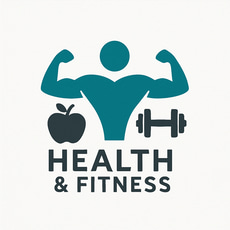The Importance of Handwashing
Handwashing is one of the easiest and most effective ways to prevent the spread of germs and maintain good health—but are you doing it correctly? This blog explores the importance of proper hand hygiene, when and how to wash your hands, common misconceptions, and why it remains essential in daily life.
PERSONAL HYGIENE & SANITATION
5/15/20253 min read
The Importance of Handwashing (and Are You Doing It Right?)
Handwashing is one of the simplest yet most powerful actions we can take to protect our health—and the health of others. Despite its importance, many people either overlook it or don't wash their hands as effectively as they should.
From preventing the spread of disease to maintaining personal hygiene, this article explores why handwashing matters, when to do it, and how to do it the right way.
Why Handwashing Matters
Our hands come into contact with countless surfaces every day—doorknobs, phones, money, keyboards, and more. Many of these surfaces carry bacteria, viruses, and other pathogens that can enter our bodies when we touch our face, food, or personal items.
According to the Centers for Disease Control and Prevention (CDC), regular handwashing can:
Reduce respiratory illnesses by 16–21%
Lower the number of people who get sick with diarrhea by 31%
Cut down absenteeism in schools and workplaces
Prevent the spread of antibiotic-resistant germs
Hand hygiene is especially important during flu season, pandemics, and in healthcare settings where vulnerable populations are at risk.
When Should You Wash Your Hands?
To effectively reduce the spread of germs, it’s important to know when handwashing is most critical. You should wash your hands:
Before eating or preparing food
After using the restroom
Before and after caring for someone who is sick
After blowing your nose, coughing, or sneezing
After touching animals or animal waste
After handling garbage
After being in public places and touching shared surfaces (e.g., elevator buttons, shopping carts)
Before and after treating a wound or cut
Remember: if your hands look dirty or feel greasy, hand sanitizer isn’t enough—use soap and water.
The Right Way to Wash Your Hands
Surprisingly, many people don’t wash their hands thoroughly enough to remove germs effectively. Here’s the CDC-recommended method for proper handwashing:
Step-by-Step Guide
Wet your hands with clean, running water (warm or cold), then turn off the tap and apply soap.
Lather your hands by rubbing them together with the soap. Don’t forget the backs of your hands, between your fingers, and under your nails.
Scrub your hands for at least 20 seconds. (Try humming “Happy Birthday” twice.)
Rinse your hands well under clean, running water.
Dry your hands using a clean towel or air dry them.
Tip: Use a paper towel to turn off the faucet or open the door in public restrooms for an added layer of protection.
What About Hand Sanitizer?
Hand sanitizers with at least 60% alcohol can reduce the number of germs on your hands, but they don’t eliminate all types of germs and aren’t effective if your hands are visibly dirty or greasy.
Use sanitizer when:
Soap and water aren't available
You're in transit or away from a sink
You need a quick clean after touching public surfaces
To use hand sanitizer properly:
Apply enough product to cover all surfaces of your hands.
Rub hands together for about 20 seconds, until they feel dry.
Handwashing Myths and Misconceptions
“I use sanitizer, so I don’t need to wash my hands.”
False. Sanitizer is helpful, but it’s not a full replacement for soap and water, especially when hands are visibly soiled.
“Cold water doesn’t kill germs.”
True, but killing germs isn’t the goal of soap and water—it’s removing them. Cold water is effective when used with soap and friction.
“Antibacterial soap is better.”
Not necessarily. Regular soap works just as well when used properly. In fact, overuse of antibacterial products may contribute to antibiotic resistance.
The Global Impact of Hand Hygiene
Access to handwashing facilities isn’t universal. In many parts of the world, lack of clean water and soap contributes to high rates of disease, particularly among children. Promoting good hygiene practices globally can:
Prevent outbreaks of diseases like cholera, norovirus, and COVID-19
Improve child survival rates
Reduce healthcare costs
Organizations like the World Health Organization (WHO) and UNICEF work to improve water, sanitation, and hygiene (WASH) access in underserved communities.
Hand Hygiene in a Post-Pandemic World
The COVID-19 pandemic reminded the world how critical handwashing is in stopping the spread of infectious diseases. While many people were more diligent during the pandemic, it’s important not to become complacent.
Maintaining strong hygiene habits helps keep everyone safer—at home, in public, and in professional environments.
Tips for Making Handwashing a Habit
Place reminders in bathrooms and kitchens
Teach kids early with fun songs and demonstrations
Keep hand sanitizer in bags, cars, and on desks
Create a routine—wash hands as soon as you return home
Make it accessible—ensure sinks are stocked with soap and clean towels
Final Thoughts
Handwashing may seem simple, but it’s one of the most powerful tools we have to maintain personal and public health. It protects against illness, prevents the spread of infection, and reinforces a culture of care and cleanliness.
Whether you’re at home, at work, or on the go, take a moment to wash your hands. Your health—and the health of those around you—depends on it.
